There are a grand total of 56 native species of birds in the Galapagos that are present throughout the whole year. 45 of these birds are endemic to the archipelago, which means that they can’t be found anywhere else in the world! The remaining 11 are indigenous, which means they do live in other places besides the Galapagos. The various birds that are present in the Galapagos are categorized as: land, shore, or sea birds.
TALK TO A DESTINATION EXPERT

Diego Zapata

Rosa Mena

Sandy Lara

Diego Zapata

Rosa Mena

Sandy Lara
In addition to these 56 native species of birds in the Galapagos Islands, there are an additional 29 species of migrant birds which vary between being both native and/or migratory.
1. Waved Albatross
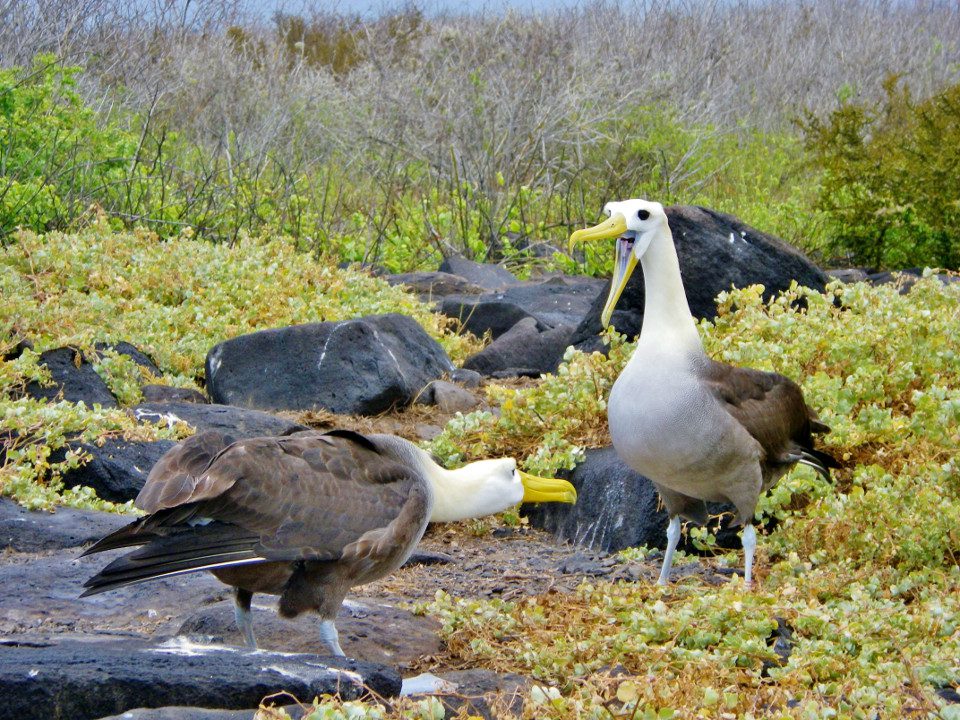
Also known as the Galapagos albatross, the waved albatross (Phoebastria irrorata) is one of the largest birds that lives in the Galapagos. It can weigh up to 11 pounds (4.9 kilograms) and has a wingspan of 7 or 8 feet (approx. 2.5 meters). This magnificent species of bird in the Galapagos are only found on one island in the archipelago – Española. As this is a migratory species of bird, you will only find them living and breeding between the months of April and December on Española Island. They have also sometimes been seen on Isla de la Plata and Genovesa Island. Waved albatrosses mate for life, and both parents work together to take care of their young.
2. Blue-Footed Booby
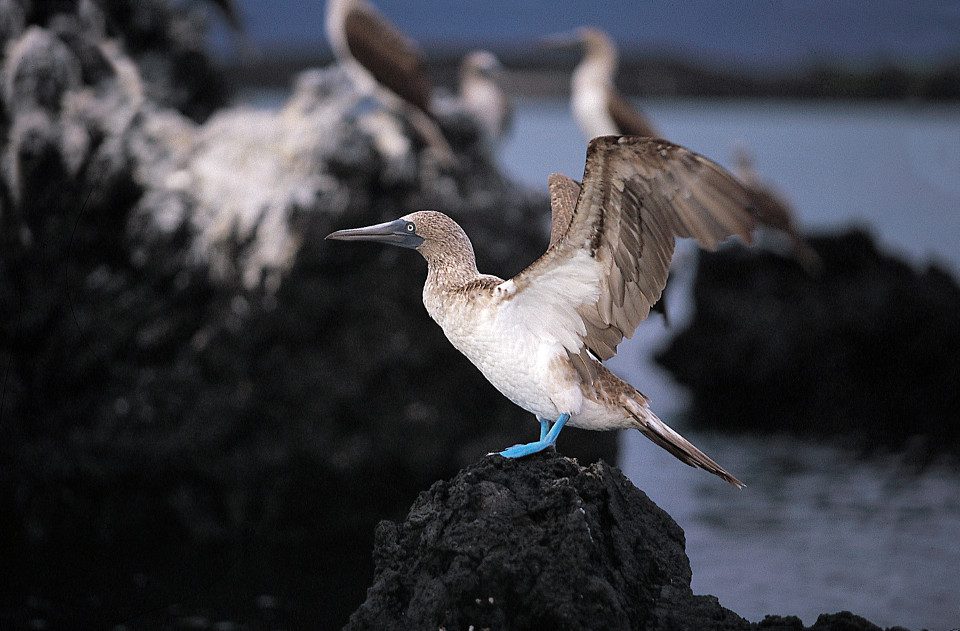
The blue-footed booby (Sula nebouxii) is one of the best-known and perhaps most iconic bird of the Galapagos. Their name comes from the Spanish word “bobo,” which means “fool” or “clown” in Spanish, and might have been coined as a reference to either their clumsiness on land or their fearlessness towards humans. Blue-footed boobies have no natural predators, so they spend a lot of time on land and even nest right on the ground, in plain sight. Seymour Island is one of their main breeding grounds, and there are so many boobies here that visitors actually have to be careful not to step on any of their nests!
3. Galapagos Hawk
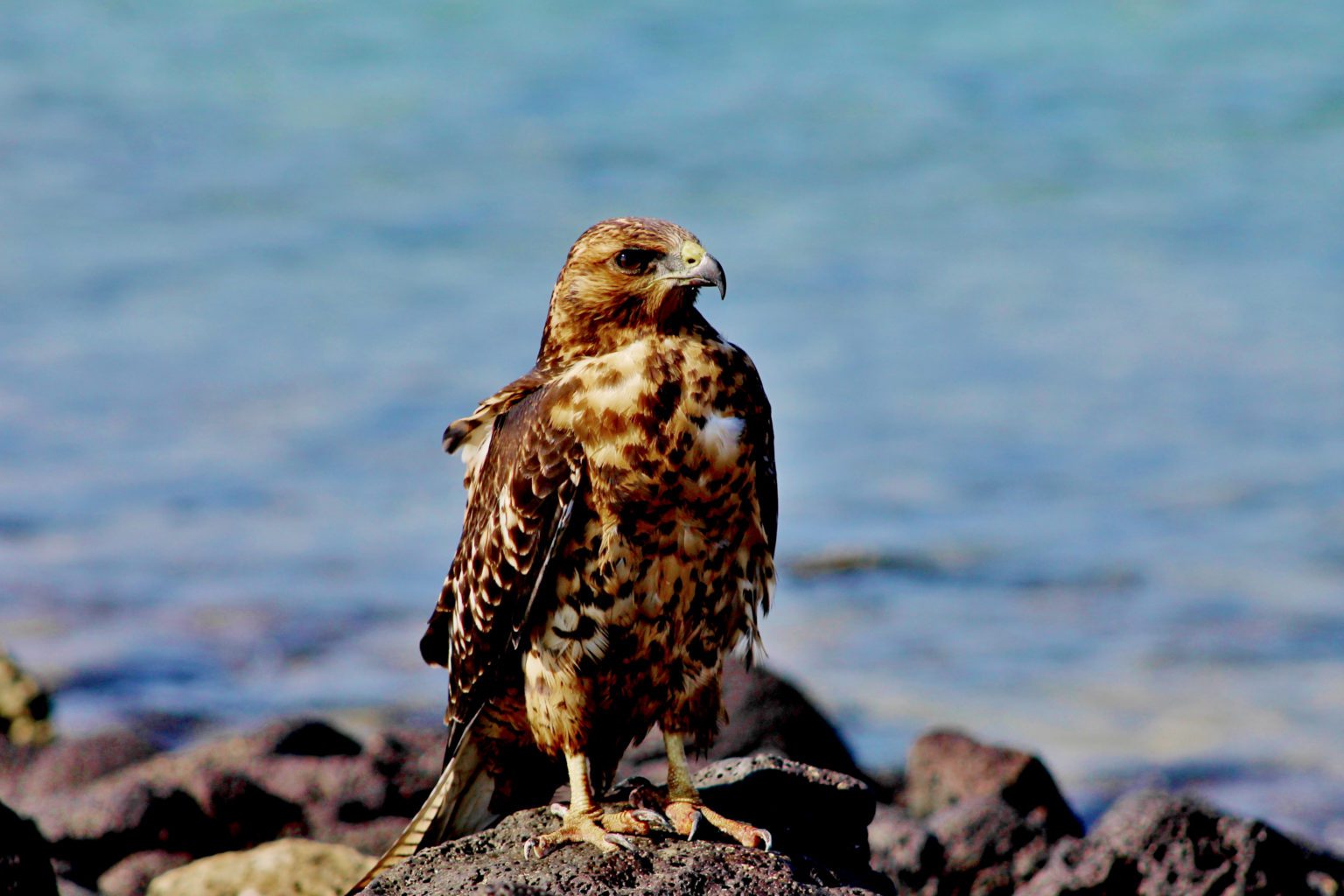
The Galapagos hawk (Buteo galapagoensis) is a bird that is endemic to the Galapagos Islands and also the only diurnal bird of prey in the archipelago. It feeds on insects, giant centipedes, rodents, and small reptiles (including the young of tortoises, sea turtles, and iguanas). This Galapagos bird’s mating behavior is highly unusual, as these hawks practice polyandry, which means that each female hawk has several, simultaneous mates. The male hawks (that she holds ties with) all partake in helping the female care for her eggs and young.
4. Galapagos Penguin
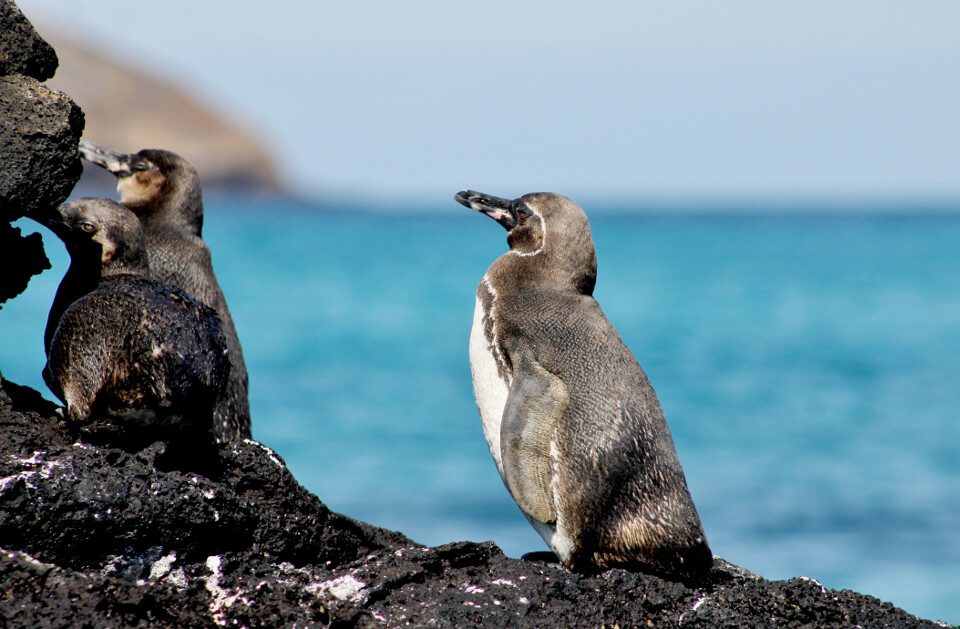
The Galapagos penguin (Spheniscus mendiculus) is the only penguin in the world that lives north of the equator and happens to be the second smallest species of penguin on our planet. The Galapagos has a population of approximately 2,000 penguins, with around 95 percent of these living on the islands of Fernandina and Isabela. They nest in caves and breed all year long.
See these iconic birds from the Galapagos Islands for yourself!
5. Magnificent Frigatebird
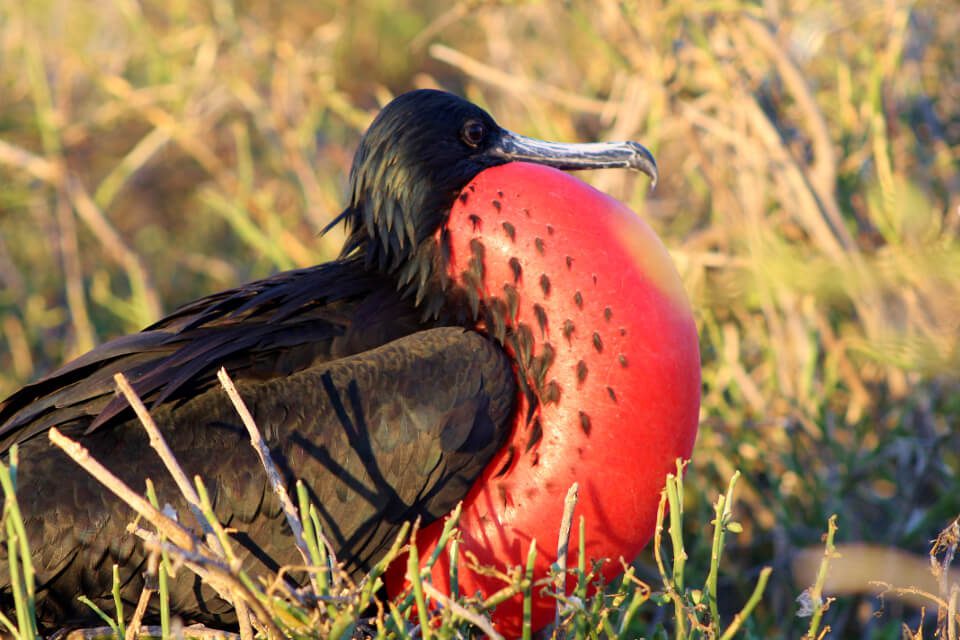
The magnificent frigatebird (Fregata magnificens) has several nicknames: Spanish sailors called them “pirate birds” and “man-o’-wars” for their habit of attacking other birds to steal their food. Darwin called them the “condors of the oceans” for their exceptionally long wingspan and ability to stay airborne for days. The magnificent frigatebird’s wingspan can match that of the waved albatross, despite having a significantly smaller, central body mass. This species, in fact, has the proportionately greatest wingspan of any living bird, and it’s popular with visitors due to its “aerial acrobatics.” The male is all black, with a red gular pouch that it will spend hours inflating during mating season to court the females. The female, which is slightly larger, has a blue ring around its eyes, along with a white breast and shoulders.
6. Flightless Cormorant
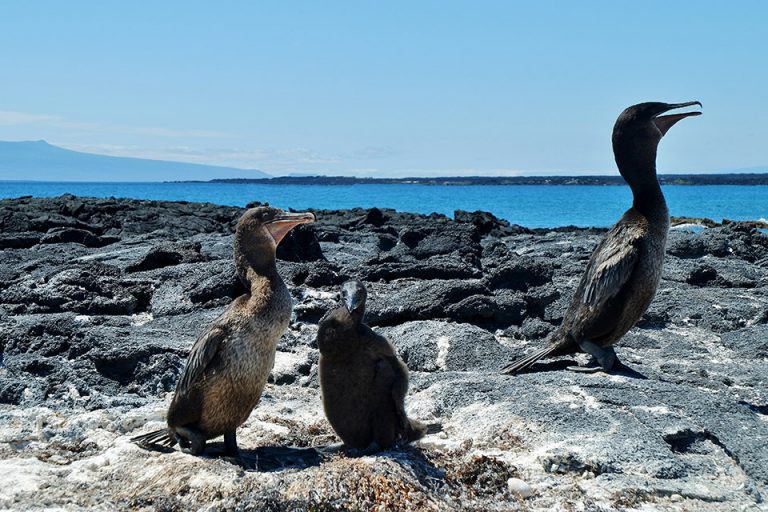
The flightless cormorant in the Galapagos is a species of bird in the Galapagos that displays wholly unique characteristics, the most remarkable of which is its acquired inability to fly. They still have wings, sure, but they’re nothing more than short and stubby vestiges of the talent for flight they once held. Now, the flightless cormorant in the Galapagos is an adept swimmer, moving amongst currents and tides like total experts in hunt for their sustenance. To this day, they remain as a living manifestation of the importance of of adaptability!
7. Red-footed booby
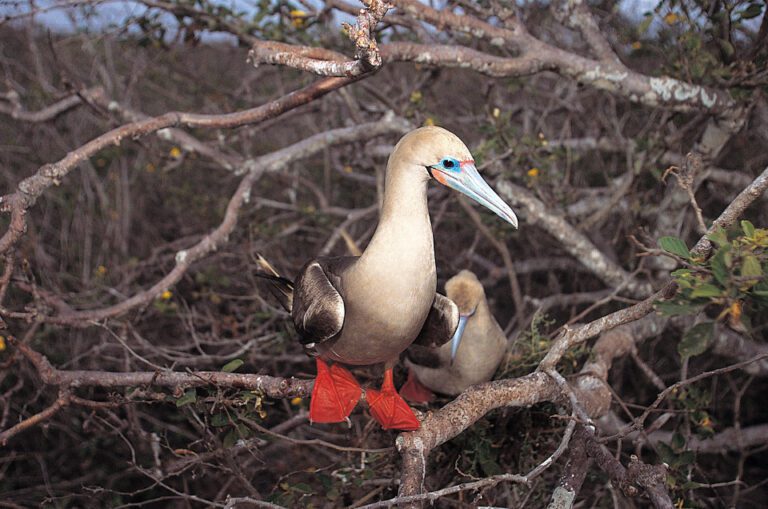
The smallest of the booby family in the Galapagos Islands, red-footed boobies are only found on select islands in the archipelago – Genovesa principally, and San Cristobal occasionally. They often forage on the outskirts of Galapagos waters, frequently on the hunt for flying fish, which they’re able to catch thanks to their remarkable speed. One of their most unique featured is that, unlike blue-footed boobies, red-footed boobies in the Galapagos nest above ground, in the bushes.
8. Galapagos Flamingo
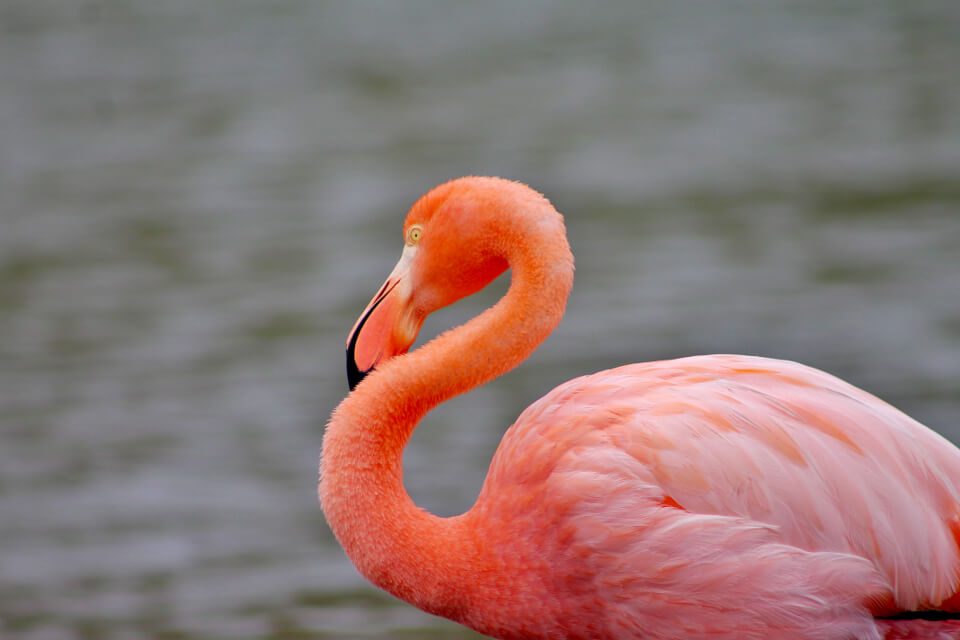
The Galapagos flamingo (Phoenicopterus ruber) makes for the smallest population of flamingo in the world, with only 320 to 350 of this particular species left. Consequently, they are considered an endangered species. While other flamingo species necessitate large groups for mating, Galapagos flamingos need only a few pairs. They inhabit saltwater lagoons near the sea and are filter feeders that mainly eat brine shrimp.
9. Darwin’s Finches
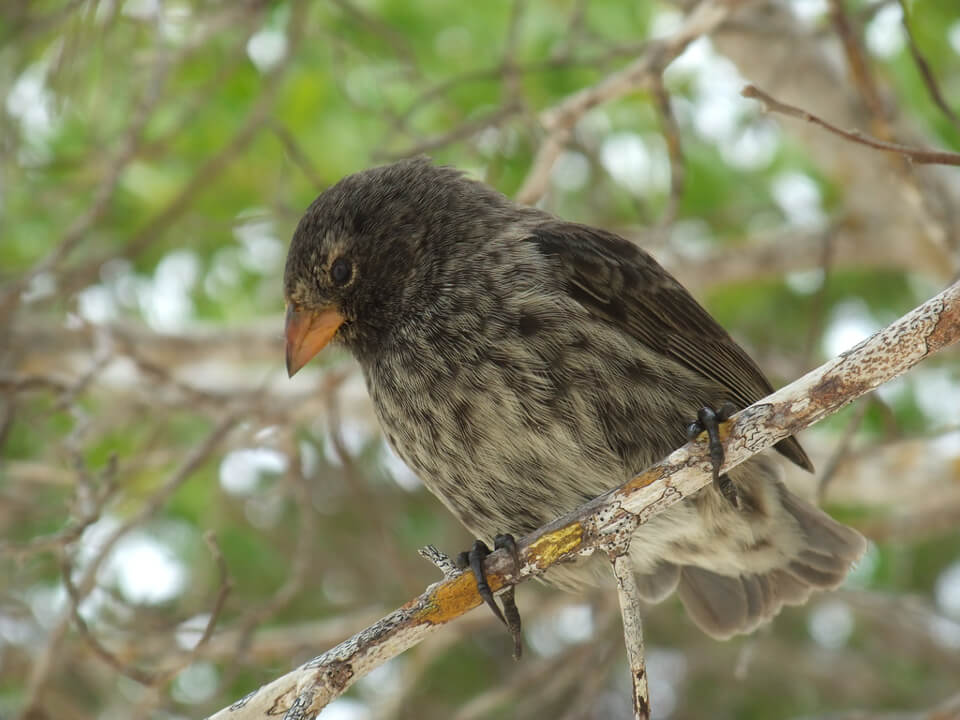
Darwin’s finches comprise 14 species that all belong to the tanager family of birds and aren’t closely related to true finches at all. They are all members of the subfamily Geospizinae. While some finches can be found throughout the islands, others are endemic to just one or two of them. The finches are known for their wide diversity in beak shape (that is a physical reflection of their diet and niche). The large ground finch (Geospiza magnirostris), for example, has a massive beak used for cracking seeds while the small tree finch (Camarhynchus parvulus) has a small beak designed for hunting insects. The sharp-billed ground finch (G. difficilis), otherwise known as the vampire finch, is a parasitic species that drinks the blood of other birds.
10. Mockingbirds
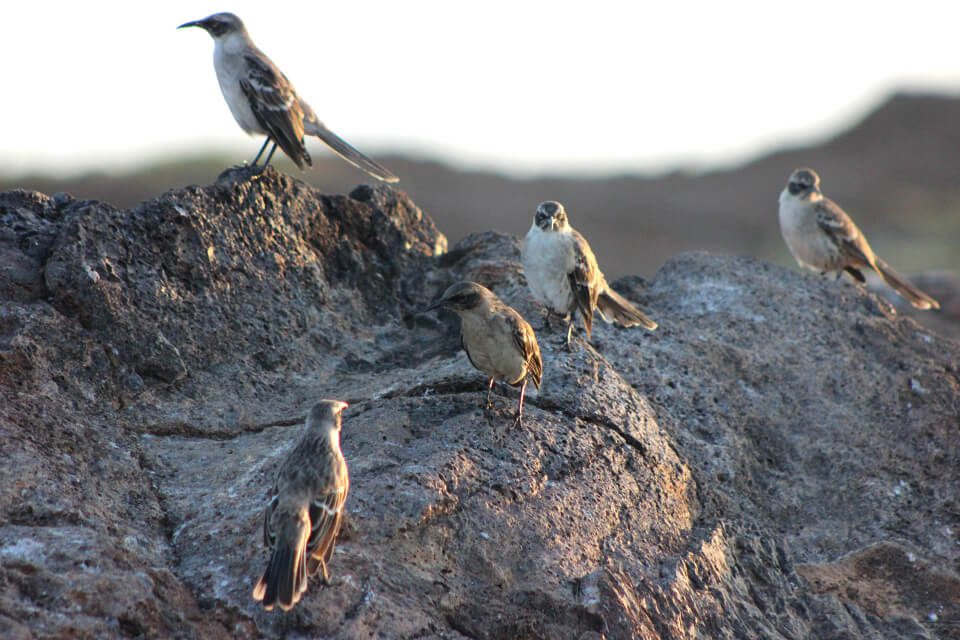
Four species of mockingbirds belonging to the genus Mimus live in the Galapagos Islands. The Galapagos mockingbird (M. parvulus) is one of the most prevalent species of birds in the Galapagos and can be found on several islands while the other three are all confined to a single island. The Española mockingbird (M. macdonaldi) is the biggest and fearless of humans. The Floreana mockingbird (M. trifasciatus) has the sad distinction of being one of the world’s rarest birds too, as there are only 250 of these left. The San Cristobal mockingbird (M. melanotis) is shyer than the other three species.
11. Swallow-Tailed Gull
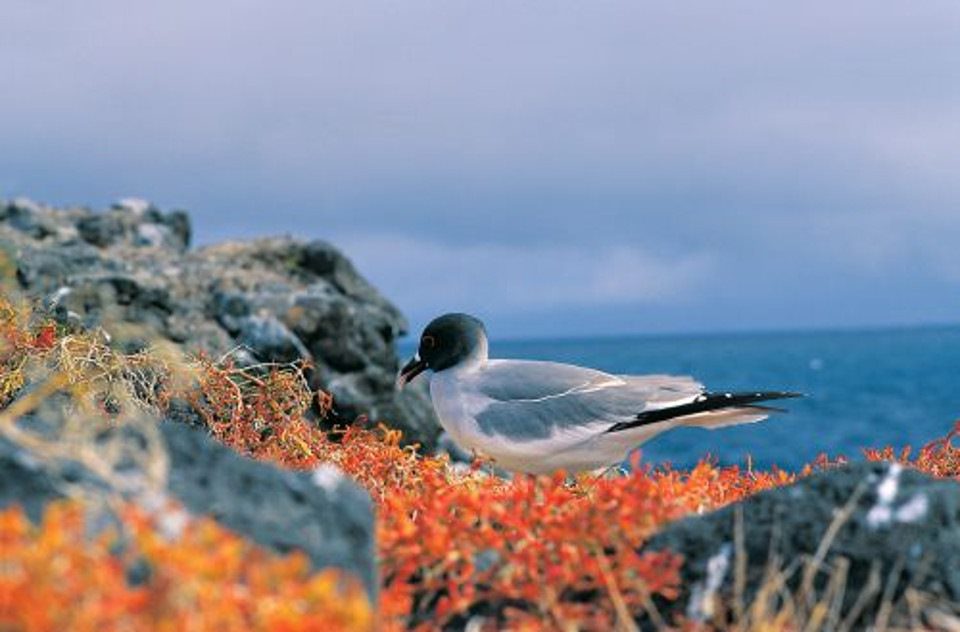
The swallow-tailed gull (Creagrus furcatus) is the world’s only fully-nocturnal gull. It feeds on the squid and fish that surface at night to eat plankton. This species can be found throughout the Galapagos Islands, and it nests on cliff ledges. Swallow-tailed gulls mate for life, and these mated pairs all stay in small groups together, collectively building nests and laying eggs at the same time. Swallow-tailed gulls have a single chick and both parents care for it.

Javier Garcia

Eduardo Silva

Carolina Escobar
START PLANNING YOUR TRIP

Javier Garcia

Eduardo Silva

Carolina Escobar
Get in touch for more
CONTACT US


